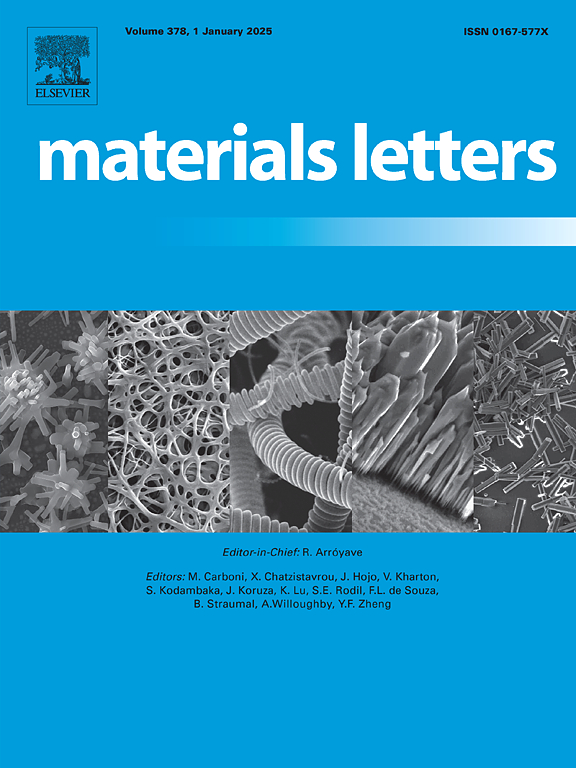Deformation behavior of Ti2AlC particles in aluminum matrix composites characterized by electron backscatter diffraction
IF 2.7
4区 材料科学
Q3 MATERIALS SCIENCE, MULTIDISCIPLINARY
引用次数: 0
Abstract
The Al matrix composite reinforced by deformed Ti2AlC particles was fabricated using spark plasma sintering, demonstrating high yield strength and plasticity. The evolution of microstructure, texture and Schmid factor (SF) was investigated by ex-situ electron backscatter diffraction (EBSD) to explore the deformation behavior of Ti2AlC. The Kernel average misorientation (KAM) maps show that large plastic deformation is mainly concentrated in Ti2AlC, which promotes the generation of geometrically necessary dislocations (GNDs). As the strain increases, the GND density gradually increases, accompanied by further enhancement of the basal texture of Ti2AlC (0001). The statistical results of SF indicate that the proportion of high SF in Ti2AlC significantly increases after deformation, which is more conducive to the activation of slip systems. Therefore, compared with composites reinforced by non-deformable particles, Ti2AlC dominates the deformation of the composite, especially promoting the enhancement of texture and the improvement of SF during the deformation process.
求助全文
约1分钟内获得全文
求助全文
来源期刊

Materials Letters
工程技术-材料科学:综合
CiteScore
5.60
自引率
3.30%
发文量
1948
审稿时长
50 days
期刊介绍:
Materials Letters has an open access mirror journal Materials Letters: X, sharing the same aims and scope, editorial team, submission system and rigorous peer review.
Materials Letters is dedicated to publishing novel, cutting edge reports of broad interest to the materials community. The journal provides a forum for materials scientists and engineers, physicists, and chemists to rapidly communicate on the most important topics in the field of materials.
Contributions include, but are not limited to, a variety of topics such as:
• Materials - Metals and alloys, amorphous solids, ceramics, composites, polymers, semiconductors
• Applications - Structural, opto-electronic, magnetic, medical, MEMS, sensors, smart
• Characterization - Analytical, microscopy, scanning probes, nanoscopic, optical, electrical, magnetic, acoustic, spectroscopic, diffraction
• Novel Materials - Micro and nanostructures (nanowires, nanotubes, nanoparticles), nanocomposites, thin films, superlattices, quantum dots.
• Processing - Crystal growth, thin film processing, sol-gel processing, mechanical processing, assembly, nanocrystalline processing.
• Properties - Mechanical, magnetic, optical, electrical, ferroelectric, thermal, interfacial, transport, thermodynamic
• Synthesis - Quenching, solid state, solidification, solution synthesis, vapor deposition, high pressure, explosive
 求助内容:
求助内容: 应助结果提醒方式:
应助结果提醒方式:


